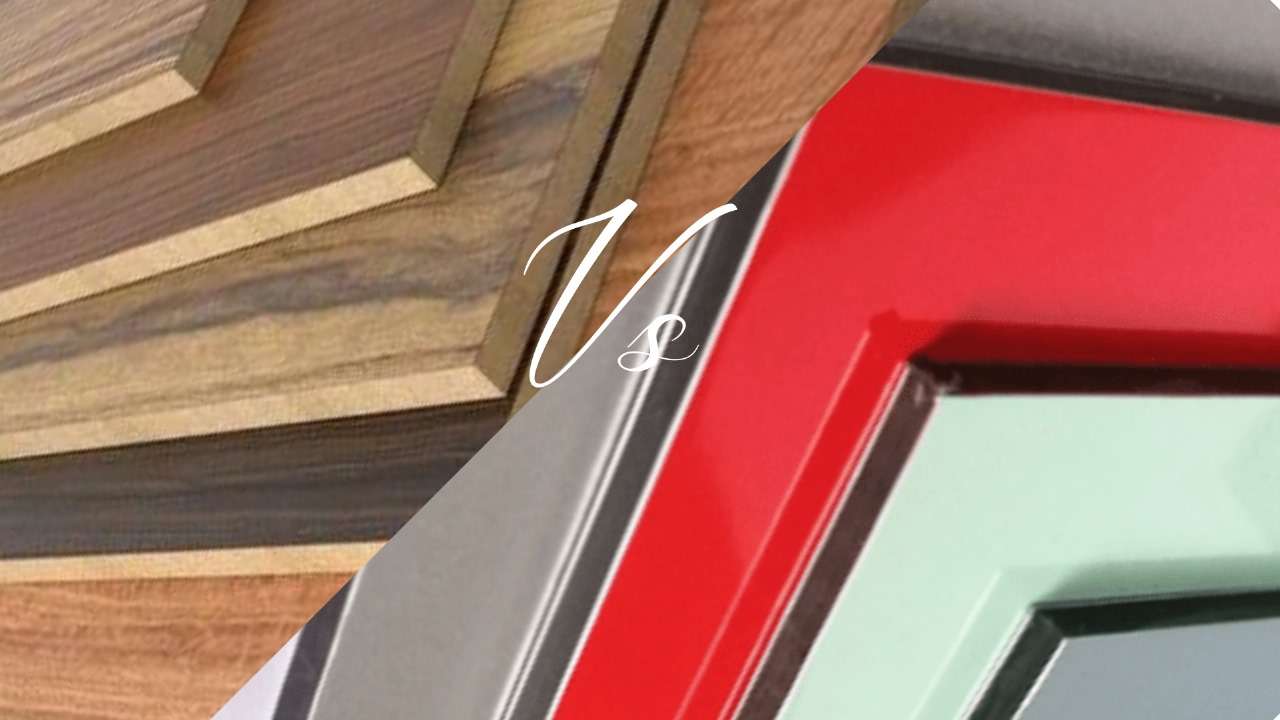Choosing the architectural design of a structure is a vital process. During this, making the right choice of cladding material is one of the most important factors as it impacts the overall longevity and aesthetics of the structure.
When you look at the wide array of choices in cladding materials, plywood and ACP (Aluminum Composite Panel) sheets are the most popular options. In this blog, let us find the details of these materials by delving deeper into the pros and cons of each. Moreover, as you read till the end, you will find out about the revolutionary invention of the wooden ACP sheet, their benefits, and more.
Overview of ACP sheets in construction
ACP sheets play an essential role when it comes to cladding in modern architectural projects due to their excellent functionality and design. These sheets are made up of double aluminium layer covering the inside material which is generally polyethylene offering the perfect combination of light weight, flexibility, and strength.
The exterior aluminium layers contribute to the high durability and weather resistance capacity of these sheets. However, the best part and the reason for the high demand of ACP sheets is their incredible versatility.
Engineers and architects are impressed with the number of different ways in which ACP sheets are available. In fact, when you choose a wooden ACP sheet, it comes with a tougher texture promising higher durability matching the evolution of structural requirements in the construction industry.
Debate between ACP sheets vs plywood
In the debate of choosing the best cladding material, plywood stands as one of the most dynamic options. Plywood sheets consist of layers of tough wooden veneers that are attached together offering a timeless appeal that experts find good.
These sheets have a natural appeal and are highly versatile making them an essential part of construction projects. However, research is ongoing to come to more solid conclusions about the overall efficiency of plywood as a cladding material.
Note that plywood offers excellent strength, but is highly sensitive against changing weather conditions and gradual damage. As a result, plywood often requires additional materials to improve its resilience against moisture and decay and become more efficient. Moreover, the timeless appeal plywood offers comes at a cost of high maintenance. You must remember that wood requires more attention to ensure any moisture deposition does not take place and that there is no decay.
It is important to understand whether or not choosing plywood as cladding material for construction project is a wise decision. While there are quite a few pros of plywood sheets such as their classic appeal, and aesthetic aspect, there are also some practical issues that you must know about.
As we look into the pros and cons of plywood, it becomes clear that the decision between this classic material and modern options is not simply based on their designs, but also on your willingness to devote time and effort in the maintenance of the same for a long-lasting and appealing exterior.
Durability and maintenance
Durability and maintenance are two of the key factors that you must consider during the process of selecting the best cladding materials. When you make the right choice in this case, it impacts the aesthetic integrity and overall longevity of the construction positively. Undoubtedly, ACP sheets undergo a stronger composition process that makes it a more durable option.
The layers made of aluminium act as tough protection against harsh climatic factors and ensures resistance against rusting, corrosion, and other types of damage in the long run. So, ACP sheets reduce the overall need for regular maintenance, unlike its plywood counterparts.
The final choice between conventional or wooden ACP sheet and plywood often depends on their durability and maintenance requirements. ACP sheets, particularly those with wooden finishes, offer an appealing combination of aesthetics and long-lasting strength with low maintenance. On the other hand, plywood has a classic and natural look, it requires regular maintenance to keep its look and integrity intact.
The rising demand for wooden ACP sheet
A wooden ACP sheet presents an unmatchable blend of style and efficiency to match the fast-pace evolution of the construction industry.
In this product, the standard and authenticity of real wood naturally combines with the structural benefits offered by traditional ACP technology. So, wooden ACP sheets have quickly become the top choice when it comes to the most efficient cladding material solutions.
The USP of wooden ACP sheets is their excellent ability to provide the timeless charm of wood without impacting the durability of conventional ACP sheets.
The wood grain textures not only offer a sense of opulence to structures, but are also resistant to weather elements, UV exposure, and overall wear and tear.
Architects are increasingly drawn to the versatility of these sheets, which come in a wide range of design options offering a perfect blend of elegance and durability.
In contemporary construction and architecture, a wooden ACP sheet checks all the boxes of cladding material benefits. As the demand for these sheets rise, it becomes clear that they are more than simply a passing fad, but a superb invention that is redefining expectations and possibilities in the field of cladding materials.
Conclusion
The solution to the constant debate between ACP sheets vs. plywood is highly subjective and depends on the specific requirements of a project. While plywood has a timeless appeal, the durability and easy maintenance of the revolutionary wooden ACP sheet, makes for an excellent choice for modern construction.
Note that the final decision is also based on careful analysis of variables such as style, durability, and environmental impact, ensuring that your cladding option will last longer. Also, for the best materials in the industry, Alumaze would be the perfect choice.


